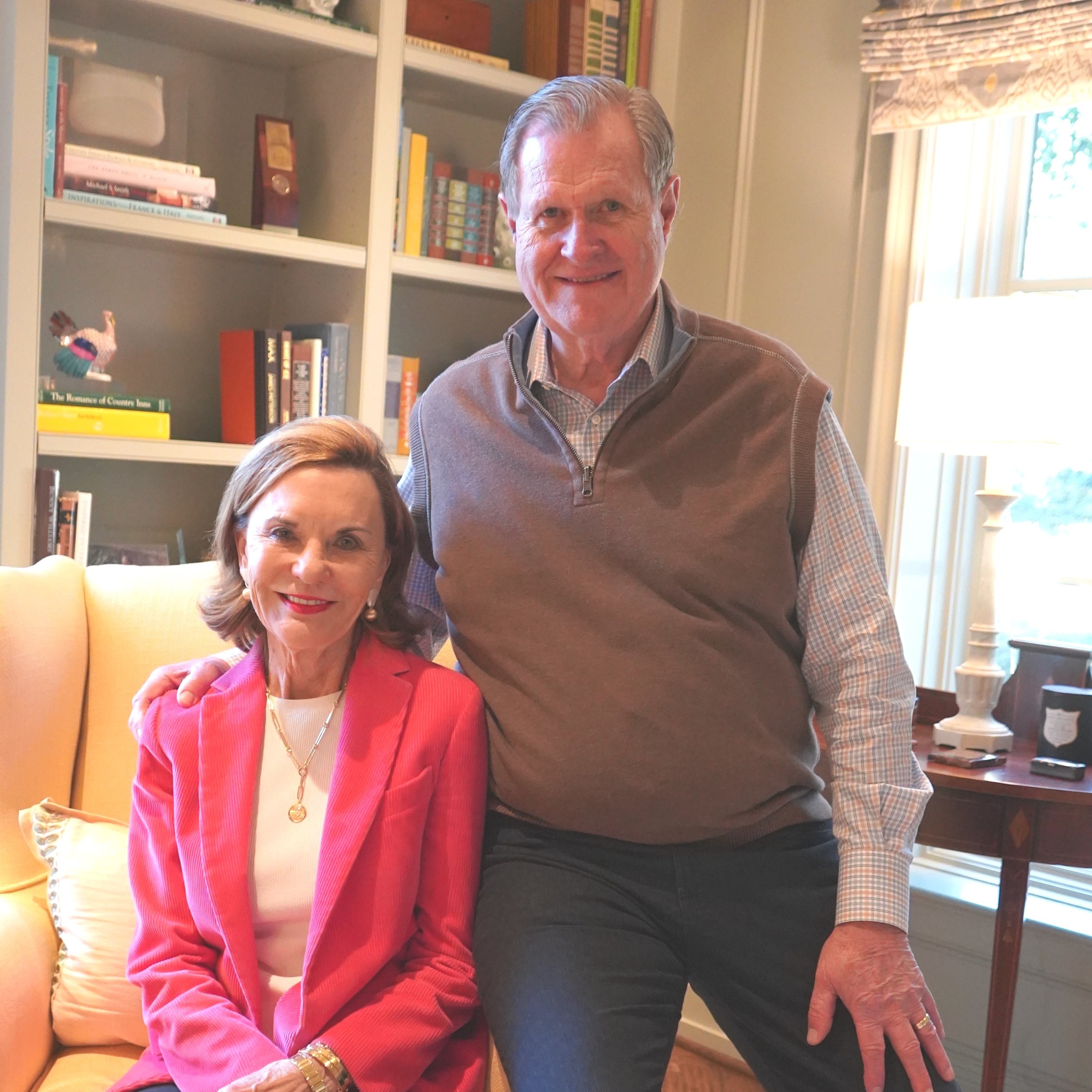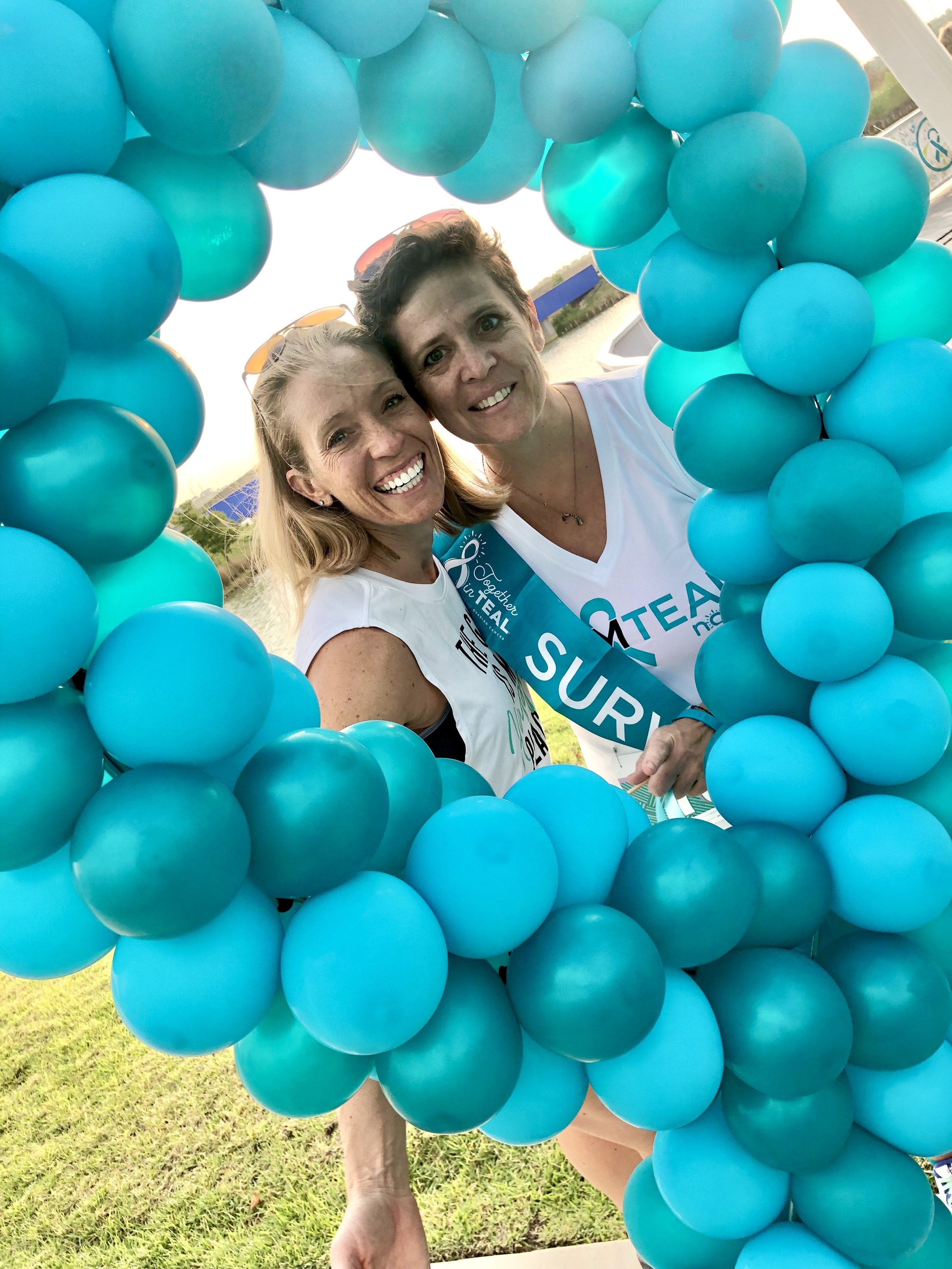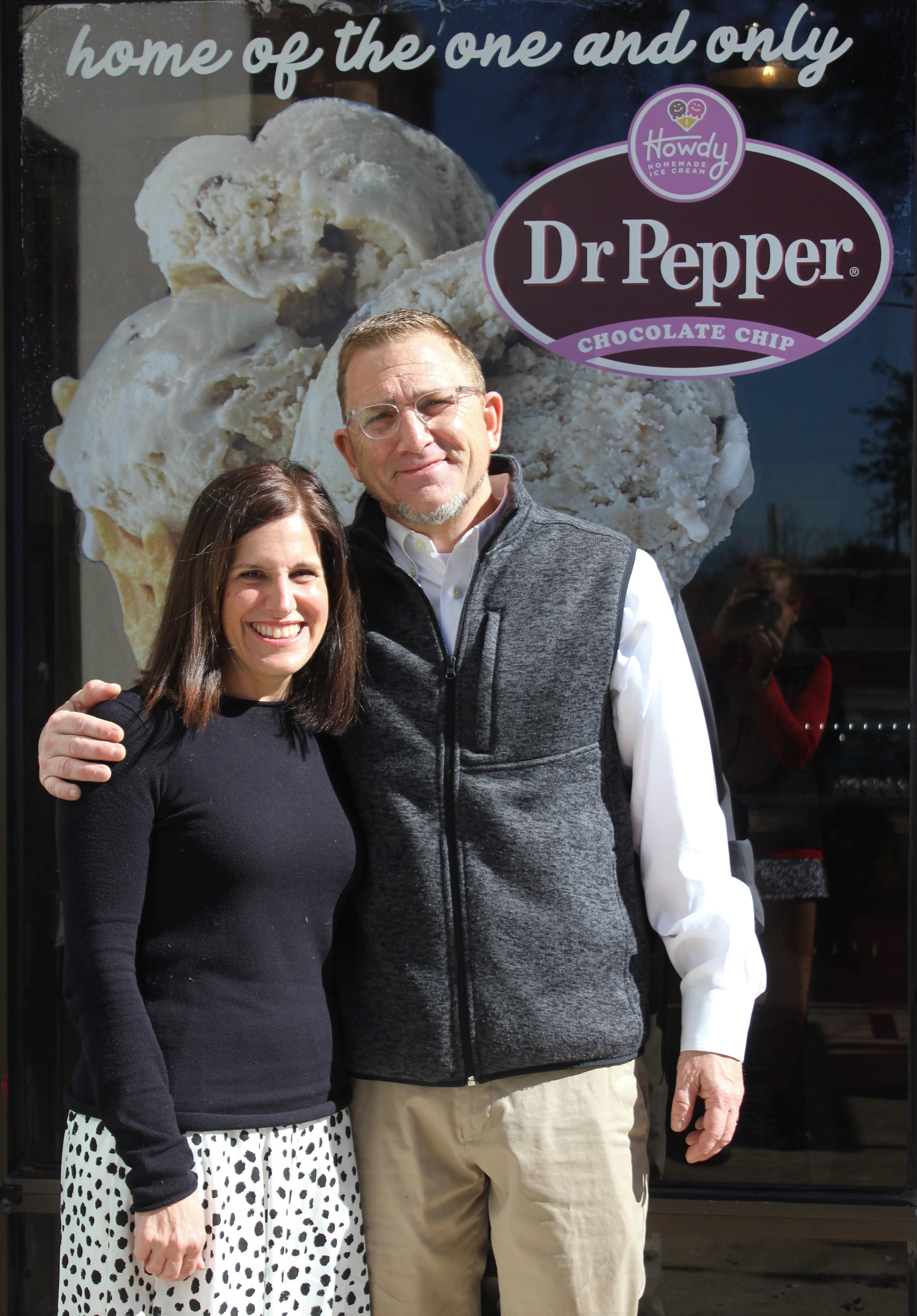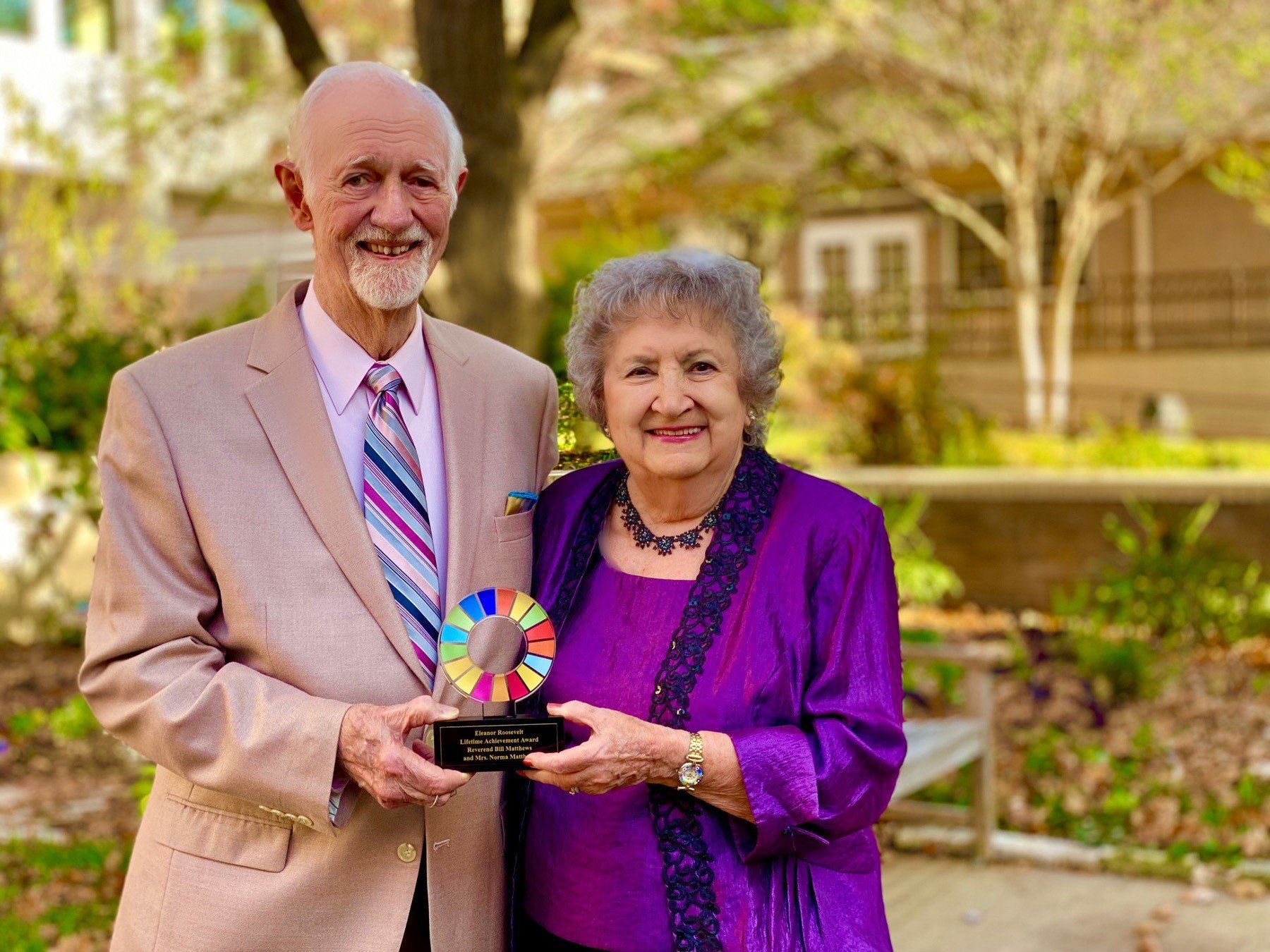Published October 1, 2021 at 11:41am.
Story by Mary Martin. Photos courtesy of Peter Halliburton and SynGAP Research Fund.
When drivers typically take on the infamous Cannonball Run, a transcontinental road trip from New York to California, they are aiming for speed. Peter Halliburton is aiming for a cure. Along with two other dads from the SynGAP Research Fund (SRF), Peter will be taking a Tesla Model X across the country while live streaming to YouTube to raise awareness and funds around SynGAP1, a rare genetic disorder that affects his son, Carter.
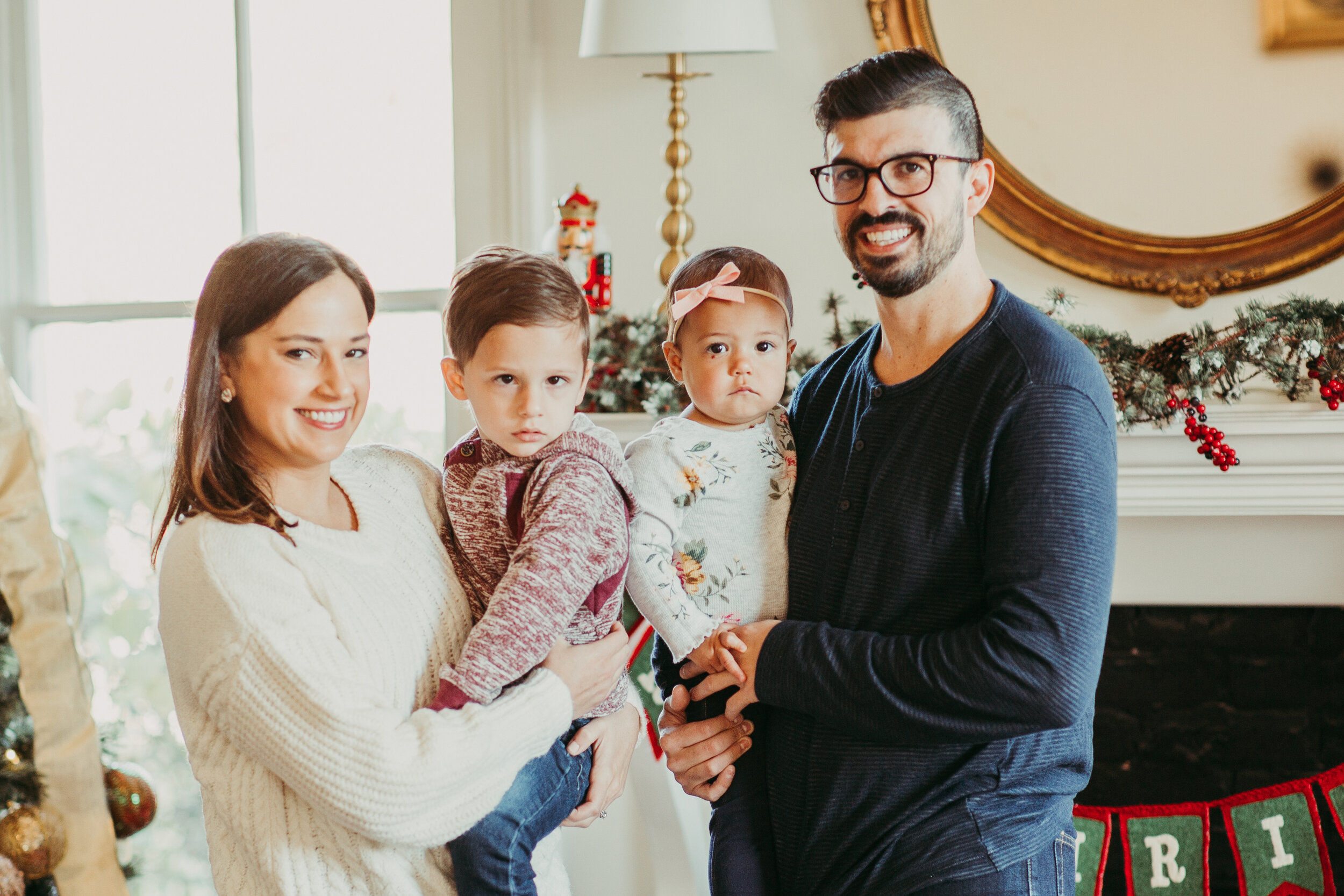
The Halliburton family in 2020.
Carter was born in McKinney in May 2017, with no noticeable symptoms. It wasn’t until he was four months old that Peter and his wife, Lindsay, noticed their son fluttering his eyes in an unusual way, and by nine months old he was missing key milestones. Between 12 and 24 months the Halliburton family went on a diagnostic journey, starting with Global Development Delay, followed by cerebral palsy and autism. Then the seizures began and after MRIs and EEGs, epilepsy was added to the growing list.
It wasn’t until they completed a full genetic testing that Carter was officially diagnosed with SynGAP1. “Initially the diagnosis was gut-wrenching,” Peter says. “The shock is really difficult because you’re essentially mourning the loss of a ‘normal life’ for your child.” But Peter’s next reaction was research, diving into the internet for information and possibly, connection.
When Carter received the SynGAP1 diagnosis in July 2019, none of his doctors had ever seen a patient with it. Peter and Lindsay had just a few printed medical descriptions to start, but then they quickly found SynGAP Research Fund. “The organization was pretty small at that point. A couple, Mike and Ashley, had co-founded SRF from their home in the Bay area.” The SynGAP Research Fund is now not only focused on raising the much-needed research funding, and supporting families who have a child with the diagnosis, but also gathering data and promoting genetic testing for more possible cases.
There are currently only 880 diagnosed cases of SynGAP1 around the world, but that number is considered to be extraordinarily under-reported and, from research, it is possible the prevalence is closer to 6/100,000 births. “That means .5% of all intellectually disabled people may have SynGAP1, so how do we make genetic testing more widely available for a precision diagnosis?” SRF also advocated for a brand new ICD-10 medical code for SynGAP1 related to intellectual disabilities, so doctors and therapists can more accurately bill to insurance, rather than relying on a secondary diagnosis like autism.
Scientists and researchers around the world have been studying the SynGAP gene on chromosome 6, and the possibility of getting to the therapeutic and treatment stage in the next decade is high. Families involved with SRF hope they can accelerate that timeline to benefit not only their children, but also children who haven’t yet been diagnosed, or even born.
As of today, SynGAP Research Fund has granted over $1.6 million to researchers at University of Southern California, Johns Hopkins, and Scripps Research. “There is a lot of interest and good basic research on the condition, so there is something to start with,” Peter says. “We have been able to do a really good job of pulling in new researchers and that’s essentially what kind of grants these are. They are designed to get a lab up and focused on SynGAP. Typically the researchers will then look for NIH grants to continue funding the work.”
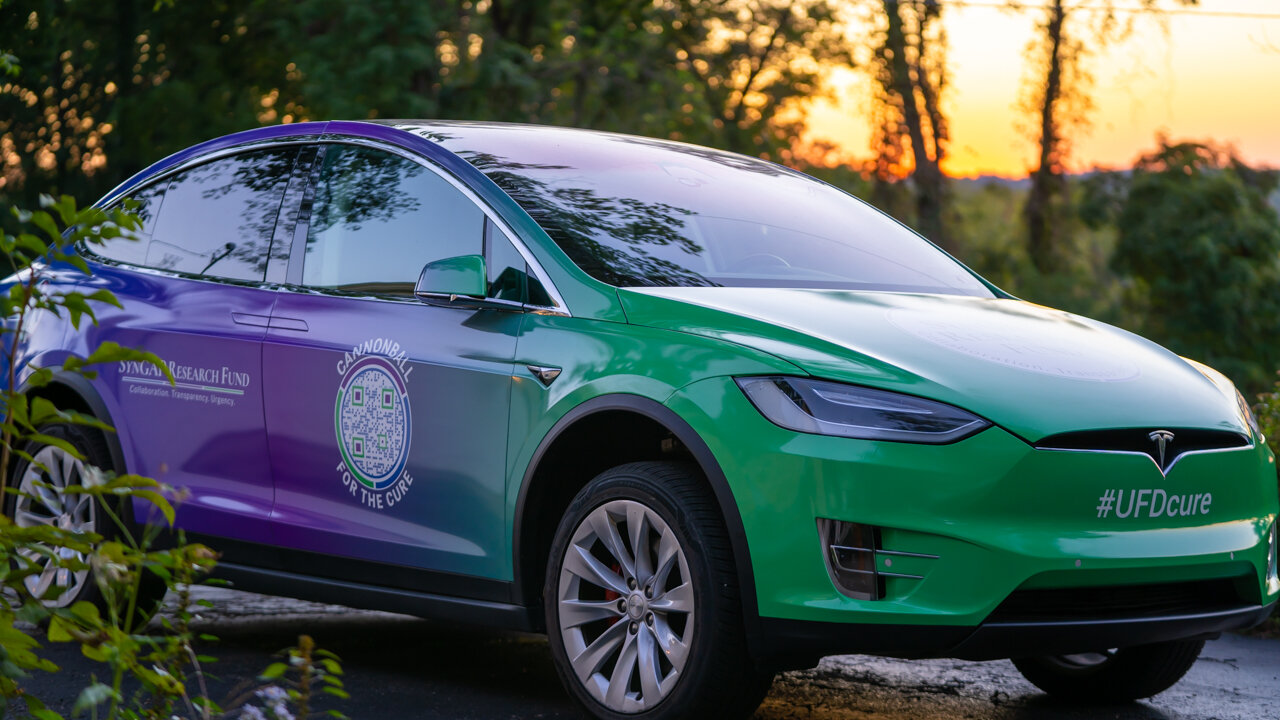
The Tesla Model X that Peter Halliburton, Brett Stelmaszek, and Kevin Fye will be driving from the Red Ball Garage in Manhattan to the Portofino Hotel & Marina in Redondo Beach, California.
The Cannonball for the Cure drive is focused on a specific goal, a project that SRF is taking on with 14 other rare disease patient organizations. Leading the way is Rarebase, a public benefit biotechnology company that launched a tech-enabled drug discovery platform called Function. Function will perform a drug screen for SynGAP, looking at all FDA approved drugs that could increase the presence of the protein that is missing for those with SynGap1. “It is possible there is already a drug that could eliminate seizures and autism behaviors,” Peter says. “If you can get these therapies to patients just after birth, or even in utero, it could be curative.” Each of the 15 patient organizations, like SRF, have committed to fundraise $150,000 and spread the cost of drug discovery over multiple genes.
The road trip begins October 6, and will be live-streamed on Twitch and the technology YouTube channel run by fellow SynGAP1 dad, Brett Stelmaszek. The trip is estimated to span nearly 2,900 miles and take close to 60 hours combined driving and charging times, highlighting that endurance in the game, both in patient care and research. While focused on safety, the three-dads are planning to have fun and give away prizes from corporate sponsors including a top of the line gaming PC.
To watch the stream and make a donation to support SynGAP Research Fund, visit justgiving.com/fundraising/ufdcure.
More Good Stories
Featured
When Kathy and Larry Helm heard about The Senior Source’s 60th Birthday Diamond Dance-Off, they knew they had to put on their dancing shoes! For the Helms, this event combined two of their passions into one. Celebrating and supporting The Senior Source, a Dallas-area nonprofit that has been serving older adults for 60 years, and dancing together, which they have been doing since they were high school sweethearts. Both Kathy and Larry have chaired the board of directors of The Senior Source and have been proud supporters since 1998. It seemed only fitting they should be voted into the finals to dance on stage at Klyde Warren Park this past summer.
In 2020, more than 912,000 women were diagnosed with some form of cancer in the United States alone. During that same pandemic year, countless medical appointments were canceled while people were social distancing, and yet still each day nearly 2,500 women heard the news, “you have cancer.” There is no doubt that these words can be crushing to hear, but what’s equally crushing is the lack of tangible, encouraging support that exists to help women feel beautiful, strong or “normal” before, during and after cancer treatment.
When Tom Landis opened the doors to Howdy Homemade in 2015, he didn’t have a business plan. He had a people plan. And by creating a space where teens and adults with disabilities can find meaningful employment, he is impacting lives throughout our community and challenging business leaders to become more inclusive in their hiring practices.
Have you ever met someone with great energy and just inspired you to be a better you? Nitashia Johnson is a creator who believes by showing the love and beauty in the world it will be contagious and make an impact. She is an encourager and knows what “never give up” means. Nitashia is a multimedia artist who works in photography, video, visual arts and graphic design. Her spirit for art and teaching is abundant and the city of Dallas is fortunate to have her in the community.
The United Nations Association Dallas Chapter (DUNA) honored Rev. Bill and Norma Matthews for their ongoing commitment, helping advance the United Nations Sustainable Development Goals agenda by promoting peace and well-being.

